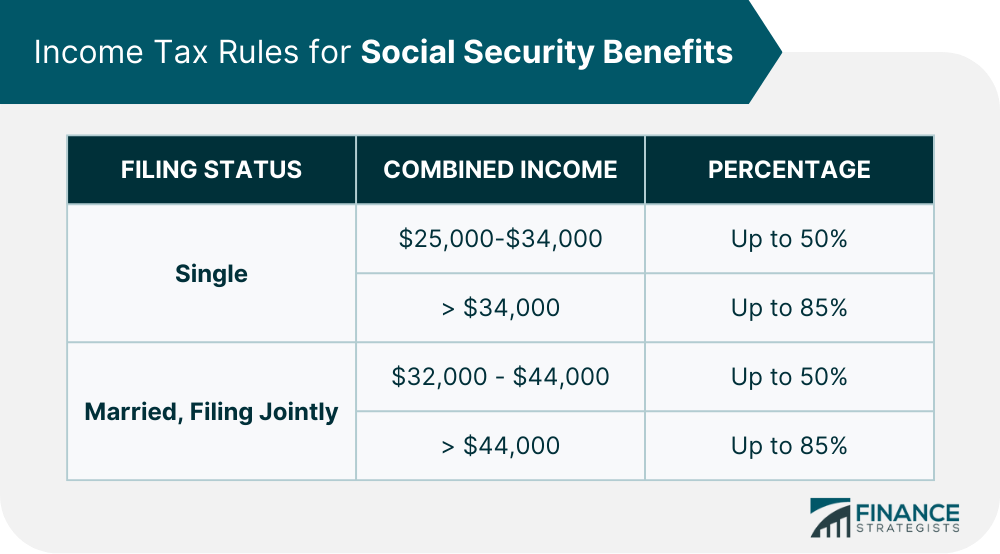
The question of how Social Security benefits are taxed has been a persistent concern for millions of American retirees, often feeling like an earned benefit unjustly diminished by federal levies. For decades, taxpayers have contributed to the system, only to discover a significant portion of their hard-earned benefits can be subject to federal income tax in retirement. This long-standing issue has periodically surged to the forefront of national discourse, particularly as various legislative proposals emerge promising relief.
Recent developments on Capitol Hill have intensified this discussion, with two distinct legislative initiatives drawing considerable attention. One aims for a sweeping, permanent overhaul of Social Security taxation, seeking to eliminate federal taxes on these benefits entirely. The other, recently enacted, offers a temporary but substantial tax deduction designed to lighten the burden for a significant percentage of older Americans. These divergent approaches reflect the complex political and economic considerations inherent in any attempt to reform a cornerstone of American retirement security.
This article aims to provide an in-depth analysis of these legislative efforts, examining their mechanisms, anticipated impacts, and the broader context of Social Security’s financial stability. We will explore the historical roots of benefit taxation, the current landscape for retirees, and what these proposed and enacted changes truly mean for individuals planning their financial futures. Understanding these intricate details is crucial for navigating the evolving terrain of retirement income.

1. **The ‘You Earned It, You Keep It Act’: A Push for Permanent Repeal**A significant legislative effort currently making its way through Congress is the ‘You Earned It, You Keep It Act,’ introduced by Sen. Ruben Gallego (D-Ariz.) and Rep. Angie Craig (D-Minn.). This bill represents a direct and ambitious challenge to the existing framework of Social Security taxation, proposing a permanent abolition of federal taxes on all Social Security benefits. Its proponents argue that after decades of contributions, retirees should be able to retain the full value of the benefits they have earned.
Unlike previous measures that have sought to incrementally reduce taxes or adjust income brackets, the ‘You Earned It, You Keep It Act’ calls for a full repeal of these taxes. If passed, the legislation would take effect starting in 2026, impacting income tax returns filed in 2027. This comprehensive approach differentiates it from other proposals, aiming for a complete cessation of the federal tax burden on Social Security.
Senator Gallego articulated the rationale behind the bill, stating, “Like a lot of Americans, I’ve been paying into Social Security since my first job at 14. But despite decades of paying into the system, seniors are still forced to pay taxes on their hard-earned benefits — all while the ultra-wealthy barely pay into the system at all.” He further emphasized the distinction from other political claims, asserting, “Trump claimed he ended taxes on Social Security. My bill actually does it. Permanently.”
To offset the considerable revenue loss from this tax relief and to ensure Social Security’s long-term viability, the bill incorporates a crucial funding mechanism. It proposes an increase in the Social Security payroll tax wage base, also known as the tax limit. Starting in 2026, all wages $250,000 and above would be subject to the 6.2% payroll tax, a significant increase from the current $176,100 cap for 2025. This means higher earners would continue contributing, effectively helping to subsidize the benefits for all retirees while extending the trust fund’s solvency.
According to projections, this dual approach — eliminating retiree taxes while increasing contributions from high earners — is anticipated to enable the Social Security Administration to maintain full payments until at least 2058. This forecast extends the program’s solvency well beyond its current projection of 2034, addressing a critical concern about the program’s long-term financial health.

2. **The GOP’s ‘One Big Beautiful Bill’: A Temporary Senior Deduction**In contrast to the sweeping changes proposed by the ‘You Earned It, You Keep It Act,’ President Donald Trump signed into law on July 4, 2025, a significant piece of legislation variously referred to as the GOP mega tax bill, the ‘One Big Beautiful Bill,’ or simply the new senior bonus tax deduction. This law, while not a direct repeal of Social Security taxation, provides substantial, albeit temporary, tax relief for millions of older Americans.
The core of this new law is a $6,000 tax deduction specifically for individuals aged 65 and older. For married couples filing jointly, both partners can claim this deduction if eligible, leading to a potential reduction of taxable income by up to $12,000. This measure is designed to run from tax year 2025 through 2028, offering a four-year window of reduced tax burden.
While this bill does not fundamentally alter the mechanics of how Social Security benefits are taxed, its impact is indirect yet significant. By trimming taxable income on paper, the deduction could pull millions of retirees below the income thresholds where their Social Security benefits become taxable. This effectively reduces, or in many cases eliminates, the federal tax liability on Social Security for a substantial portion of the senior population, at least for the duration of the deduction.
According to White House figures, approximately 64% of seniors already do not pay taxes on their Social Security benefits. This new bill is projected to raise that number to an impressive 88%, significantly expanding the pool of retirees who will effectively see their Social Security benefits untaxed. The Social Security Administration celebrated this as a historic step, with Commissioner Frank Bisignano stating, “This is a historic step forward for America’s seniors… By significantly reducing the tax burden on benefits, this legislation reaffirms President Trump’s promise to protect Social Security and helps ensure that seniors can better enjoy the retirement they’ve earned.”
Experts, such as Krisstin Petersmarck, president and founder at New Horizon Retirement Solutions, noted the targeted nature of this relief: “Low-income retirees are already tax-exempt. So, it is reasonable to say the policy provides relief to middle and upper-middle-class households.” This clarifies that the deduction is primarily aimed at those middle-income retirees who previously bore a significant tax burden on their benefits.

3. **Historical Context: Why Social Security Benefits are Taxed**The taxation of Social Security benefits is not an original feature of the program but a relatively more recent development, dating back to 1984. For decades, the benefits received by retirees were entirely exempt from federal income tax. This changed amidst growing concerns about the program’s solvency and the need for additional federal revenue.
The 1983 amendments to the Social Security Act introduced taxation on benefits for certain income levels, a measure intended to shore up the trust funds. At that time, it was estimated that less than 10% of Social Security beneficiaries would pay taxes on their benefits. The thresholds established in 1984 were $25,000 for single filers and $32,000 for married couples filing jointly, figures that have remained unchanged for nearly four decades.
The stagnation of these income thresholds, combined with natural wage growth and inflation, has led to a phenomenon known as “bracket creep.” As retirees’ incomes have gradually increased over the years, more and more individuals and couples have found themselves crossing these immutable thresholds, consequently becoming subject to taxation on their Social Security benefits. This has significantly altered the landscape of retirement income planning for many.
Today, the impact of these unchanged thresholds is striking: nearly 56% of Social Security recipients now pay some form of federal income tax on their benefits. This stark increase from less than 10% in 1984 highlights the growing financial pressure on retirees, many of whom feel that their earned benefits are being eroded by a tax system that has not adapted to economic realities. The push for reform is, in part, a response to this historical trajectory.

4. **Current Rules: How Social Security Benefits are Taxed Today**Understanding the current mechanism of Social Security benefit taxation is crucial for comprehending the urgency of recent legislative efforts. As it stands, a portion of Social Security benefits can be taxable for retirees whose “combined income” exceeds specific thresholds. This combined income formula is defined as the sum of adjusted gross income (AGI), tax-free interest, and half of the individual’s Social Security benefits.
For single filers, if this combined income is between $25,000 and $34,000, up to 50% of their Social Security benefits may be taxable. If their combined income exceeds $34,000, up to 85% of their benefits can be taxed. Similarly, for married couples filing jointly, if their combined income falls between $32,000 and $44,000, up to 50% of their benefits may be taxable. Should their combined income surpass $44,000, up to 85% of their Social Security benefits could be subject to federal income tax.
These thresholds, established in 1984, have remained constant, a fact that lawmakers and advocacy groups frequently highlight as a primary driver for the current push for change. The static nature of these figures means that more retirees are drawn into the tax net each year, even without a significant increase in their real income. This system has been criticized for penalizing those who have diligently worked and saved throughout their careers, creating an unintended tax burden.
The revenue generated from taxing Social Security benefits is substantial, projected to be nearly $1 trillion over the next decade. This revenue is critical, as it supports both the Social Security and Medicare trust funds. The financial implications of altering this taxation structure are therefore considerable, presenting a complex challenge for policymakers seeking to provide relief without destabilizing vital federal programs.

5. **The Drive for Change: Arguments Against Social Security Taxation**The increasing number of retirees subject to Social Security taxation has fueled a bipartisan drive for legislative change. Lawmakers from both sides of the aisle argue that the current tax structure unfairly penalizes individuals who have contributed to the system throughout their working lives. With inflation consistently eroding the purchasing power of retirement budgets, the argument for tax relief has gained significant momentum.
Central to the argument for change is the concept of fairness. Many view Social Security as an earned benefit, a payout from a fund to which they have directly contributed through payroll taxes. The notion that a portion of these “earned” benefits is then taxed by the federal government again is often perceived as a double taxation, particularly by those living on fixed incomes who find themselves increasingly squeezed by rising living costs.
Moreover, the stagnation of the income thresholds since 1984 is a key point of contention. Had these thresholds been indexed to inflation, fewer retirees would likely be paying taxes on their benefits today. The failure to adjust for inflation has led to a situation where a modest retirement income can trigger a tax liability, affecting a broader demographic than originally intended. This lack of adjustment is a core reason why nearly 56% of beneficiaries now pay taxes, up from less than 10% at the outset.
The push for change is also influenced by the political landscape, with promises to eliminate or reduce these taxes becoming campaign talking points. The public sentiment, particularly among older adults, strongly favors retaining more of their Social Security benefits. This pressure from constituents, combined with the economic realities faced by retirees, creates a powerful impetus for lawmakers to seek viable solutions for tax relief.

6. **Impact on Social Security Trust Fund Solvency**Any discussion about altering the taxation of Social Security benefits inevitably leads to the critical question of its impact on the program’s long-term financial health. The Social Security Trust Fund faces ongoing solvency challenges, with projections indicating a potential depletion date unless legislative changes are enacted. The 2025 Social Security Trustees Report projects the program’s main trust fund to be depleted by 2033, which would necessitate a 23% across-the-board benefit cut without intervention.
The two major legislative proposals discussed — the ‘You Earned It, You Keep It Act’ and the GOP’s ‘One Big Beautiful Bill’ — present contrasting effects on the Trust Fund’s solvency. The ‘You Earned It, You Keep It Act,’ by proposing an increase in the payroll tax wage base for higher earners, aims to not only fund the repeal of taxes but also significantly extend the Trust Fund’s life. Projections indicate this approach could enable the Social Security Administration to maintain full payments until at least 2058, pushing the depletion date back by 24 years from the current forecast of 2034.
Conversely, the temporary senior deduction included in the GOP’s ‘One Big Beautiful Bill’ does not include any offsets for the reduced federal revenue. This absence of a funding mechanism means that while it provides immediate tax relief for many retirees, it is projected to have a detrimental effect on the Social Security Trust Fund. Analysts warn that this temporary tax break could accelerate the Trust Fund’s depletion by one year, moving the projected date from 2033 to 2032. This highlights a fundamental trade-off between providing immediate relief and ensuring the long-term stability of the program.
Critics, such as the Center on Budget and Policy Priorities, emphasize that “Scaling back taxation would primarily help higher-income beneficiaries… That would make the system less progressive and require either payroll tax increases or benefit cuts to balance the books.” This underscores the intricate balance between tax policy, social equity, and fiscal responsibility that lawmakers must navigate when considering changes to Social Security taxation.
Read more about: In-Depth Analysis: Decoding the 2026 Social Security COLA Forecast and Its Financial Implications for Retirees

7. **Understanding the “$6,000 Senior Bonus” Deduction**The new tax deduction, often referred to as the “$6,000 Senior Bonus,” is a key provision of the GOP’s ‘One Big Beautiful Bill’ and offers tangible relief for many retirees. Signed into law on July 4, 2025, this deduction is specifically targeted at individuals aged 65 and older, allowing them to claim an additional deduction of up to $6,000. For married couples filing jointly, where both spouses are 65 or older, this deduction can double to $12,000, significantly reducing their taxable income.
This temporary deduction, effective for tax years 2025 through 2028, functions by lowering a retiree’s total taxable income. While it doesn’t directly change the rules for Social Security taxation, it strategically reduces the amount of income subject to federal taxes. Since Social Security benefits are only taxed if a retiree’s income crosses specific thresholds, this deduction can effectively pull many individuals and couples below those taxable limits.
Eligibility for the full deduction hinges on a retiree’s Modified Adjusted Gross Income (MAGI). Single filers must have a MAGI under $75,000 to claim the full $6,000 deduction. For married couples, the combined MAGI must stay below $150,000 to claim the full $12,000. Above these limits, the deduction phases out, reducing by six cents for every dollar over the cap, and disappears entirely once income reaches $175,000 for individuals or $250,000 for couples.
This design means that the primary beneficiaries are middle-to-upper-middle-income households, which previously paid significant taxes on their Social Security benefits. Lower-income retirees often already fall below the thresholds for taxing Social Security, so while welcome, the impact of this new deduction on them might be less pronounced in terms of dollar savings. For those within the targeted income bands, however, this temporary measure could lead to considerable savings on their annual tax bills.

8. **Dissecting the Senior Bonus Deduction: Eligibility and Fine Print**The “$6,000 Senior Bonus” deduction, a key provision of the GOP’s ‘One Big Beautiful Bill,’ offers a temporary reduction in taxable income for many older Americans. However, its full benefit is contingent on specific eligibility criteria related to Modified Adjusted Gross Income (MAGI) and filing status. This temporary relief, in effect from tax year 2025 through 2028, provides a critical window for retirees to potentially lower or eliminate federal taxes on their Social Security benefits.
For individual filers, the full $6,000 deduction is accessible if their MAGI remains below $75,000. Married couples filing jointly can claim the full $12,000 deduction, provided their combined MAGI does not exceed $150,000. These thresholds are designed to direct relief towards a specific segment of the retiree population, primarily middle and upper-middle-income earners.
The deduction also includes a phase-out mechanism. For every dollar earned above these MAGI limits, the deduction is reduced by six cents. This gradual reduction ensures the benefit diminishes for higher earners, disappearing entirely once an individual’s income reaches $175,000, or a married couple’s combined income hits $250,000. This structure tailors the relief, largely excluding the highest earners.
Specific rules apply to married couples concerning age and filing status. Both spouses must be 65 or older to claim the full $12,000 deduction. If only one spouse meets the age requirement, a couple can still claim a $6,000 deduction, but only by filing jointly. Filing separately generally results in a higher portion of Social Security benefits being taxed, unless circumstances allow for separate living arrangements for the entire year. This detailed framework underscores the necessity for retirees to carefully assess their financial situation to maximize their potential savings.

9. **Who Benefits Most: Income Distribution and Policy Intent**The strategic design of the new senior bonus deduction ensures its primary beneficiaries are middle-to-upper-middle-income households. This targeted approach addresses concerns about where tax relief can have the most significant impact, particularly for those who previously faced substantial tax burdens on their Social Security benefits due to “bracket creep.”
Lower-income retirees frequently fall below the existing income thresholds that trigger federal taxation on Social Security benefits, meaning their benefits are often already untaxed. As such, this new deduction provides minimal additional relief for this group in terms of direct tax savings. Its main purpose is to alleviate the tax pressure on those middle-income retirees who previously bore the brunt of federal levies.
Krisstin Petersmarck, president and founder at New Horizon Retirement Solutions, highlighted this, stating, “Low-income retirees are already tax-exempt. So, it is reasonable to say the policy provides relief to middle and upper-middle-class households.” This clarifies the specific demographic targeted by the legislation, aiming to offer practical savings to a segment previously impacted by static income thresholds.
For example, a retired couple, both over 65, with $120,000 in income, could leverage various deductions, including the standard deduction, age-related additional deductions, and the new bonus, totaling $46,700. This could substantially reduce their taxable income, potentially removing much, if not all, of their Social Security benefits from the tax equation. Conversely, high-income retirees exceeding the phase-out limits ($175,000 for individuals or $250,000 for couples) will find little to no financial advantage from this deduction.

10. **Exploring Alternative Pathways: The ‘RETIREES FIRST Act’**Beyond the sweeping repeal proposed by the ‘You Earned It, You Keep It Act’ and the temporary deduction of the ‘One Big Beautiful Bill,’ other legislative proposals offer distinct approaches to Social Security taxation. The ‘RETIREES FIRST Act,’ introduced by Senators Marsha Blackburn (R-Tenn.) and Roger Marshall (R-Kan.), exemplifies a more incremental strategy by focusing on raising income thresholds rather than a full elimination of taxes.
This legislation proposes to increase the provisional income thresholds that determine when Social Security benefits become taxable. Specifically, it would raise them to $34,000 for individual filers and $68,000 for couples filing jointly. This marks a significant adjustment from the current static thresholds of $25,000 for individuals and $32,000 for couples, which have remained unchanged since 1984.
Senator Blackburn underscored the importance of this relief, stating, “Retirees across the country depend on Social Security, especially after enduring the record-high inflation of the last four years. This bill would cut taxes on seniors’ benefits, helping them keep more of their hard-earned money.” The proposal aims to ease the financial burden on seniors whose fixed incomes have been eroded by persistent inflation.
A key feature of the ‘RETIREES FIRST Act’ is its potential to mitigate future “bracket creep” by incorporating an annual inflation adjustment to the new thresholds. This forward-looking aspect aims to prevent a recurrence of the situation where static thresholds gradually draw more beneficiaries into the tax net. While not a complete repeal, this approach offers a potentially more fiscally sustainable path to tax relief, seeking to restore the original intent of the 1983 amendments while ensuring ongoing revenue for trust funds.

11. **Navigating the Evolving Landscape: Strategic Planning for Retirees**The ongoing legislative discussions and the implementation of temporary tax relief measures underscore the critical need for proactive financial planning among retirees and pre-retirees. The dynamic nature of tax policy, particularly concerning Social Security, demands continuous vigilance and adaptable personal financial strategies to optimize benefits and minimize tax liabilities effectively.
Experts strongly advise retirees to reassess their withdrawal strategies in light of these potential tax changes. With Social Security benefits potentially facing reduced taxation, it might become advantageous to draw more funds from taxable retirement accounts, such as traditional 401(k)s or IRAs, before tapping into tax-free Roth accounts. Paul Miller, CPA and founder of Miller & Company LLP, recommends, “It’s a good idea to sit down with a tax advisor to model different scenarios,” to ensure personalized and informed decision-making.
Furthermore, retirees accustomed to pre-paying taxes on their Social Security benefits should reconsider their estimated payments or withholding. During the years the temporary deduction is active, or if permanent changes are enacted, adjusting these payments could free up immediate cash flow. However, financial advisors caution against allowing short-term tax relief to unduly influence long-term retirement decisions. Ash Ahluwalia, managing director and head of Social Security planning at OneTeam Financial, stressed, “When to file for Social Security is a long-term decision and should not be swayed by short-term tax relief. Claiming early still reduces your monthly benefit permanently.” This highlights the ongoing necessity for retirees to monitor legislative developments and adjust their financial plans with professional guidance.
Read more about: U.S. Federal Budget Deficit Surges Toward $2 Trillion: An In-Depth Analysis of Rising Spending and the Complex Role of Trump-Era Tariffs

12. **Accessing Additional Funds: Leveraging Home Equity**In an environment of shifting tax laws and persistent financial pressures, retirees are increasingly exploring diverse avenues to supplement income and manage significant expenses without immediately depleting their primary retirement savings. Two prominent strategies involve leveraging home equity: a Home Equity Line of Credit (HELOC) and a reverse mortgage. Each offers distinct financial implications, necessitating careful consideration for suitability.
A Home Equity Line of Credit (HELOC) allows homeowners to borrow against their home’s equity on an as-needed basis, providing flexible access to funds for large, infrequent expenses such as medical bills or home repairs. HELOCs typically feature lower interest rates than unsecured credit cards, making them a more cost-effective borrowing option. However, they require monthly payments, which can be challenging for those on limited or fixed incomes, and failure to meet these obligations places the home at risk.
Alternatively, a reverse mortgage caters to homeowners aged 62 and older with substantial home equity but limited income. This financial product converts a portion of home equity into tax-free cash, disbursed as a lump sum, monthly payments, or a line of credit, without requiring ongoing monthly mortgage payments. Repayment is deferred until the homeowner moves out, sells the home, or passes away, offering a potential lifeline for seniors needing an extra income source who plan to remain in their homes. Despite its benefits, a reverse mortgage comes with critical considerations, including the loan balance growing over time and strict rules regarding residency that can trigger immediate loan repayment. Consulting a certified financial planner is crucial to navigate these intricacies.

13. **Optimizing Savings and Investment Withdrawals for Greater Security**Beyond leveraging home equity, retirees have other crucial financial maneuvers to consider for enhancing security amidst evolving tax landscapes. These strategies focus on optimizing existing assets and carefully managing the timing of withdrawals to minimize tax impact and maximize long-term growth of retirement funds.
A fundamental strategy is to ensure existing cash reserves are generating returns. Instead of letting funds sit in low-interest checking accounts, retirees should consider high-yield savings accounts or Certificates of Deposit (CDs). With current offerings often exceeding 4% interest, these low-risk options provide a safe method to grow savings while maintaining essential liquidity, contributing to overall financial stability without exposure to market volatility.
Another powerful move involves strategically delaying withdrawals from traditional retirement investment accounts, such as 401(k)s or IRAs. If living expenses can be covered by other reliable income streams—like Social Security, part-time work, or annuities—postponing withdrawals allows these accounts more time to compound and grow. This prolonged growth can translate into more substantial income and potentially lower taxes in the future, especially if withdrawals are managed to occur in lower tax brackets.
Before implementing any significant financial strategy, the invaluable role of a certified financial planner or advisor cannot be overstated. Professionals provide tailored advice, helping retirees understand the complex interplay of tax consequences, investment performance, and personal financial goals. Strategies like reverse mortgages and HELOCs, while potent, require careful consideration of individual circumstances to avoid unintended financial complications. A knowledgeable advisor can help craft a comprehensive plan aligned with a retiree’s specific situation, ensuring confident navigation of the financial landscape.
Read more about: Kiplinger’s Guide: 12 Essential Strategies for Americans to Navigate and Thrive Through an Economic Recession

14. **The Enduring Challenge: Social Security’s Long-Term Health**While recent legislative actions offer some immediate tax relief for many retirees, they simultaneously underscore the persistent, long-term solvency challenges confronting the Social Security program. Ensuring the program’s health for future generations necessitates comprehensive and sustainable solutions that extend beyond temporary deductions.
According to the 2025 Social Security Trustees Report, the program’s main trust fund is projected to face depletion by 2033. Without decisive congressional intervention, this depletion would trigger an across-the-board benefit cut of 23%. This alarming projection highlights the urgency of the situation. Furthermore, legislative changes, such as the ‘One Big Beautiful Bill’s’ tax breaks lacking revenue offsets, are projected to accelerate the trust fund’s depletion by one year, shifting the date to 2032.
Critics, including the Center on Budget and Policy Priorities, warn that “Scaling back taxation would primarily help higher-income beneficiaries… That would make the system less progressive and require either payroll tax increases or benefit cuts to balance the books.” This perspective emphasizes the delicate balance between providing tax relief, maintaining the program’s progressive structure, and ensuring its financial viability.
These fiscal hurdles are compounded by significant demographic shifts. In 1960, the system benefited from over five workers contributing for every beneficiary; today, that ratio has fallen to just three-to-one and continues to decline, exerting increasing strain on the pay-as-you-go system. Concurrently, Social Security taxes now cover only 83% of total income, down from 90% in 1983, further widening the funding gap. Experts caution that while temporary tax relief is welcome, it does not address these fundamental structural issues, reiterating Ash Ahluwalia’s point that “the longer Congress waits to act, the more painful the fix will be.”
**A Look Ahead: Charting a Course for Retirement Security**
The discourse surrounding Social Security taxation and its future is undeniably complex, interweaving legislative initiatives, economic realities, and the deeply personal financial planning of millions of Americans. While temporary tax deductions offer a measure of immediate relief, they also serve as a stark reminder of the larger, unresolved questions about the program’s long-term viability and the fairness of its funding mechanisms. Retirees and pre-retirees alike are faced with a dynamic landscape where vigilance and informed decision-making are paramount.
Read more about: Maximizing Your Social Security: A Comprehensive Guide to Average Benefits at Ages 62, 67, and 70
The interplay of various legislative proposals—from calls for permanent repeal to targeted deductions and threshold adjustments—reflects a national dialogue grappling with how best to honor a lifetime of contributions while securing the promises made to future generations. As policymakers continue to deliberate, individuals are empowered to navigate this evolving terrain through strategic financial planning, judiciously leveraging available tax breaks, optimizing savings, and seeking expert counsel. Ultimately, the long-term durability of Social Security hinges on collective action and a shared commitment to ensure this vital pillar of retirement remains robust, equitable, and capable of weathering the economic shifts of tomorrow.




